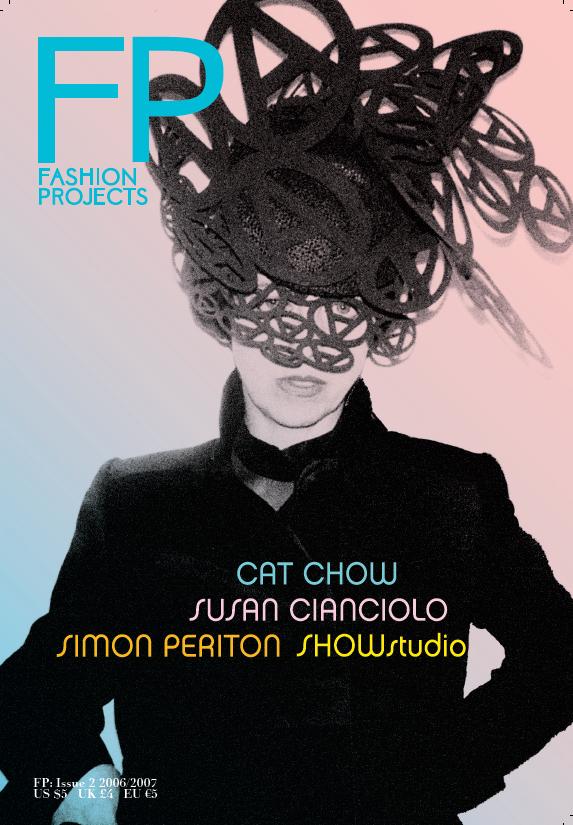Issue #2: Fashion and Art Collectives
/ Published January 2007
Published January 2007
The second issue of Fashion Projects covers fashion and art collectives, as well as collaborative projects between artists and fashion designers. It’s meant as a reminder of the inherently collaborative nature of fashion which is often forgotten as, particularly at the higher ends of the industry, so much rides on the “individual” designer.
Of course, it’s hard to resist the temptation of trumpeting “the individual,” and we couldn’t help but give in to such a temptation when the individuals in question turned out to be so interesting and down to earth—as is the case with Cat Chow and Susan Cianciolo, who skillfully combine and confound the categories of art, craft and fashion. Both artists forge collaborations in their music careers: Each artist formed a band, which relies on fashion and costumes as an integral ingredient. Continuing on this theme, the British artist Simon Periton describes his collaborations with a number of fashion designers from Raf Simons to Junya Watanabe to the milliner Philip Treacy. Meanwhile, the New York–based designer Despina Papadopoulos(founding member of the design collective Studio 5050) tells of her electronic garments and her collaborations with the fashion design collective As Four.
Examining the inherent political dimension of collaboration and collectives, Lidia Ravviso looks at the use of clothes by European protest movements from the now defunct Tute Bianche to the more recent “pink” movements. It is with these movements that the Situationist-inspired Italian collective Serpica Naro aligns itself, developing an elaborate identity for a fake designer with non-existent press offices and made-up fashion spreads. In fact, Serpica Naro’s spoof was so successful that the imaginary designer gained entrance to the official Milanese fashion calendar, surprising the audience with ironic and politically charged garments tailored to the needs of disenfranchised laborers.
Elsewhere in the issue are interviews with a number of art and fashion collaboratives of various sizes and scopes, from the well-known British website Show Studio to the Austrian fashion organizations Unit F (responsible for instituting and organizing Austrian fashion week) to Elsewhere, an art collaborative housed in a century-old thrift store in Greensboro, North Carolina. Also of a collaborative nature is the performance piece organized for this issue by Flâneuse, which revives “the ghetto blaster” via the unlikely transformation of a 1970s Fendi bag to provocative and ironic effects.
Francesca Granata





